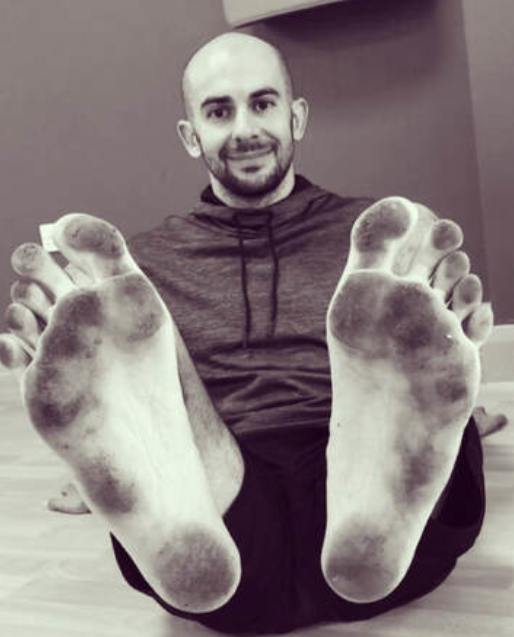Your feet are a brilliant example of evolutionary engineering

A complex mechanical structure of the human body
composed of:
10 Tendons
19 Muscles
26 Bones
33 Joints
107 Ligaments
200,000 Nerve Endings
That all work together to bear weight, allow for locomotion (walk, run) and transmit force (jump).
Why You Should Consider Training Barefoot

Barefoot training encourages you to use the natural movement of your feet.
Modern shoes are shoe shaped, and not foot shaped! - excluding barefoot shoes.
Normal shoes and socks can compress & squish your toes, which can lead to poor foot mechanics and bunions.
Rigid shoes, combined with thick soles allow for very little to no movement of the joints in your feet, and a nulling of any sensory feedback, which can cause injuries due to a lack & delay of information provided from the ground underneath us.
This lack of movement and rigidity in the feet and ankles, can also cause issues and compensatory patterns upstream to the knees, hips and back.
Modern shoes are shoe shaped, and not foot shaped! - excluding barefoot shoes.
Normal shoes and socks can compress & squish your toes, which can lead to poor foot mechanics and bunions.
Rigid shoes, combined with thick soles allow for very little to no movement of the joints in your feet, and a nulling of any sensory feedback, which can cause injuries due to a lack & delay of information provided from the ground underneath us.
This lack of movement and rigidity in the feet and ankles, can also cause issues and compensatory patterns upstream to the knees, hips and back.
Here are 6 benefits of barefoot training
1. Sensory Awareness & Feedback
2. Foot & Ankle Strength
3. Increases Coordination
4. Improved Balance and Stability
5. Healing and Connection
6. Better Posture and Alignment
To help manage or mitigate these symptoms you can
Deep Knee Bends with Calf Raise


